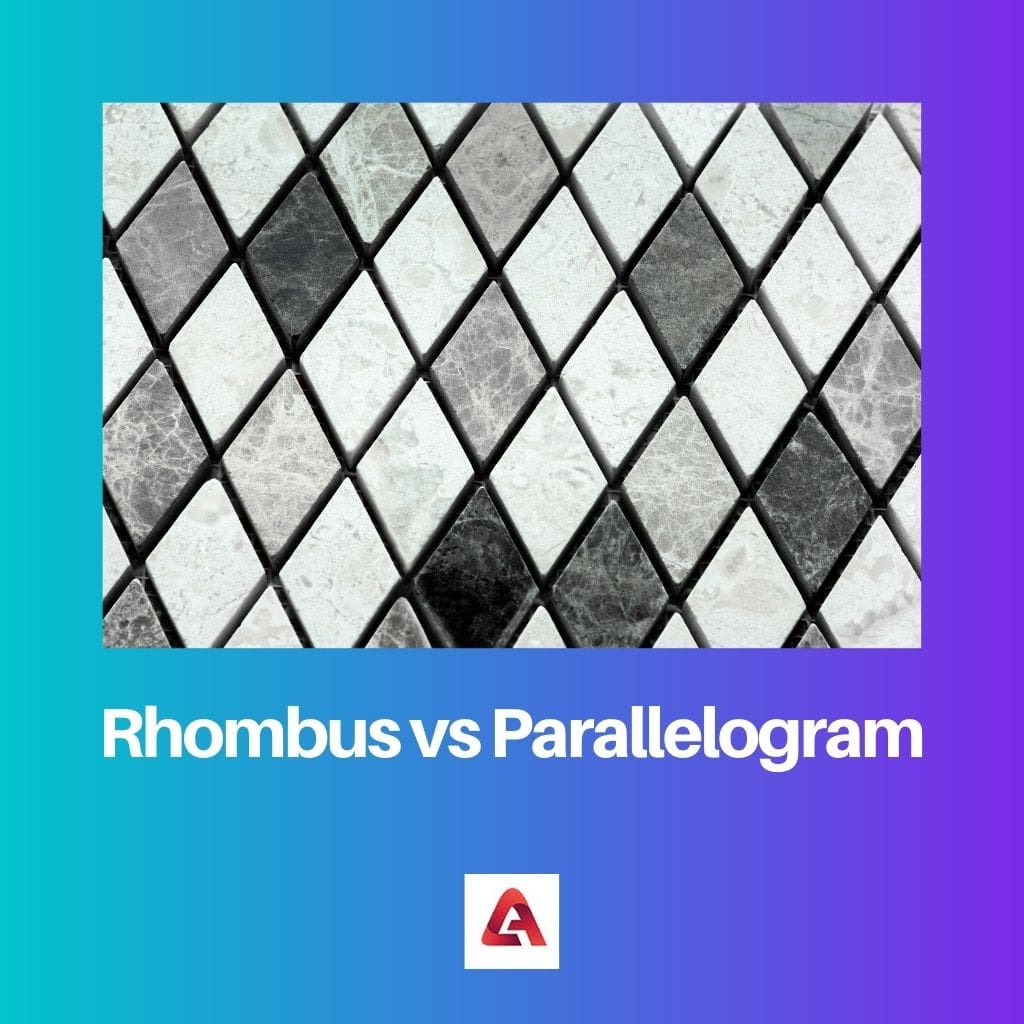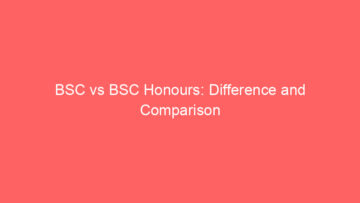Quadrilaterals come in different types. The most common types of quadrilaterals are a square, rectangle, rhombus, parallelogram, trapezium, and kite.
Many people get confused with rhombus and parallelograms and wonder if they are similar or if the terms are used interchangeably.
Rhombus and Parallelograms are different, although they have four sides and four vertices and look almost similar.
Key Takeaways
- A rhombus is a quadrilateral with all four sides equal in length and opposite sides parallel, forming a symmetrical diamond shape.
- A parallelogram is a quadrilateral with opposite sides parallel and equal in length, encompassing various shapes such as rectangles, squares, and rhombi.
- The main distinction between a rhombus and a parallelogram is the equality of side lengths. All sides of a rhombus are equal, whereas a parallelogram only requires opposite sides to be equal and parallel.
Rhombus vs Parallelogram
Rhombus is a different kind of square that is slanted, and all of the sides are equal, but the diagonals are all at 90 degrees at the point of interaction. Parallelogram is a unique kind of rectangle that has parallel sides, but the diagonals and the opposite sides all have equal lengths in size.

However, the above is not the only difference. A comparison between both the terms on specific parameters can shed light on subtle aspects:
Comparison Table
| Parameter of Comparison | Rhombus | Parallelogram |
|---|---|---|
| Meaning | Type of square having equal neighbouring sides | Type of rectangle having parallel sides equal in length |
| Origination | From the word “to turn round and round.” | From word “Parallelogrammon” |
| Equality | All four sides will have the same length | Only opposite sides are equal in length |
| Similarity | Rhombus is very similar to a square, with the only difference being square is not in a slanting position while a rhombus is in a sloping place. | Parallelogram is very similar to a rectangle, with the only difference being rectangle is not in a slanting position while a parallelogram is in a sloping place. |
| Perimeter/ Circumference measurement | The perimeter of a rhombus is measured by formula 4a, where “a” represents the side of the rhombus. | The perimeter of a parallelogram is measured by the formula 2 (a+b), where “a” represents the side, and “b” represents a base. |
| Area Measurement | The area of a rhombus is measured by the formula (PQ)/2, where “p” and “q” represent the diagonals. | The area of a parallelogram is measured by the formula bh, where “b” represents the base, and “h” means the height. |
| Diagonals | Diagonals of a rhombus are at 90 degrees to each other at the intersection point. | Diagonals of a parallelogram are not at 90 degrees to each other at the intersection point. |
| Overall Scope | Rhombus can be considered as a Parallelogram | Every parallelogram cannot be considered a rhombus |
What is Rhombus?
Rhombus is derived from the Greek word “rhombos” and the verb “rhembō.” Rhombus is a concept that originated from Euclidean geometry. Rhombus, in literal terms, means something that whirls or spins around quickly.
Rhombus is a type of square because all the sides of a rhombus are equal. However, the rhombus is a slanting (sloping) square. That means the sides are not at right angles. All rhombus cannot be considered as a square, but vice versa can be true.
Rhombus has specific characteristics. The first one will be all sides will be equal in length. Secondly, the diagonal will cross each other at 90 degrees.
Other features include opposite sides being parallel, opposite angles being equal, having 2 dimensions, and having a closed shape. Finally, adjacent angles will sum up to 180°.
Rhombus is also known as an equilateral quadrilateral or diamond. Rhombus can be considered a type of parallelogram or a specific type of parallelogram as it fulfils the requirements of a parallelogram.
In real-life scenarios, rhombus can be seen in various aspects, the common being a kite. Other things include building structures, ornament structures, and mirrors.

What is Parallelogram?
A parallelogram is a concept derived from Euclidean geometry. Parallelogram is derived from multiple words such as the French word ‘Parallelogramme’, the Greek ‘Parallelogrammon’, and the Latin word ‘Parallelogrammum’.
A parallelogram is a type of rectangle. A parallelogram means something which is surrounded by parallel lines. Parallelogram, where all the angles are perpendicular, will be considered a rectangle.
The parallelogram has two pairs of parallel sides. The parallel sides are of equal length. The opposite angles of the parallelogram will be of equal measure.
Parallelogram angles total 180° and hence can be called supplementary angles. An exciting feature of a parallelogram is that if one angle is right, all angles will be in the correct position.
A parallelogram with opposite sides is parallel and will never cross each other. The area of a parallelogram will be double the area of a triangle created by one of its diagonals.
The diagonals of the parallelogram will cross each other at the middle point. Each diagonal will separate a parallelogram into two triangles which are identical in form.
Parallelogram area is measured by multiplying a base by the height. The perimeter, the distance around the edges, is calculated by multiplying 2 by (base + side length).
A parallelogram which has all sides congruent can be considered a rhombus. A parallelogram with all angles at right angles and equal diagonals will be regarded as a rectangle.
A parallelogram that has all sides equal sides with all angles perpendicular to each other can be considered a square.

Main Differences Between Rhombus and Parallelogram
- Rhombus is a type of square. A parallelogram is a type of rectangle.
- Rhombus will have all four sides equal in length. The parallelogram will only have opposite sides equal.
- Rhombus has all four sides parallel to each other. The parallelogram has only opposite sides similar.
- 4a and a=side measure the perimeter of the rhombus. The perimeter of the parallelogram is measured by 2 (a+b) and a=side, b=base.
- Diagonals of the rhombus are perpendicular to each other at crossing points. Diagonals of the parallelogram are not perpendicular to each other at the crossing point.
- The area of the rhombus is measured by pq/2, where p and q are the diagonals. The size of the parallelogram is measured by bh where b= base and h= height.






